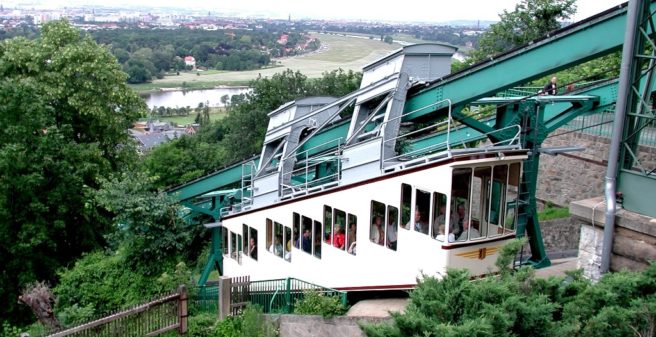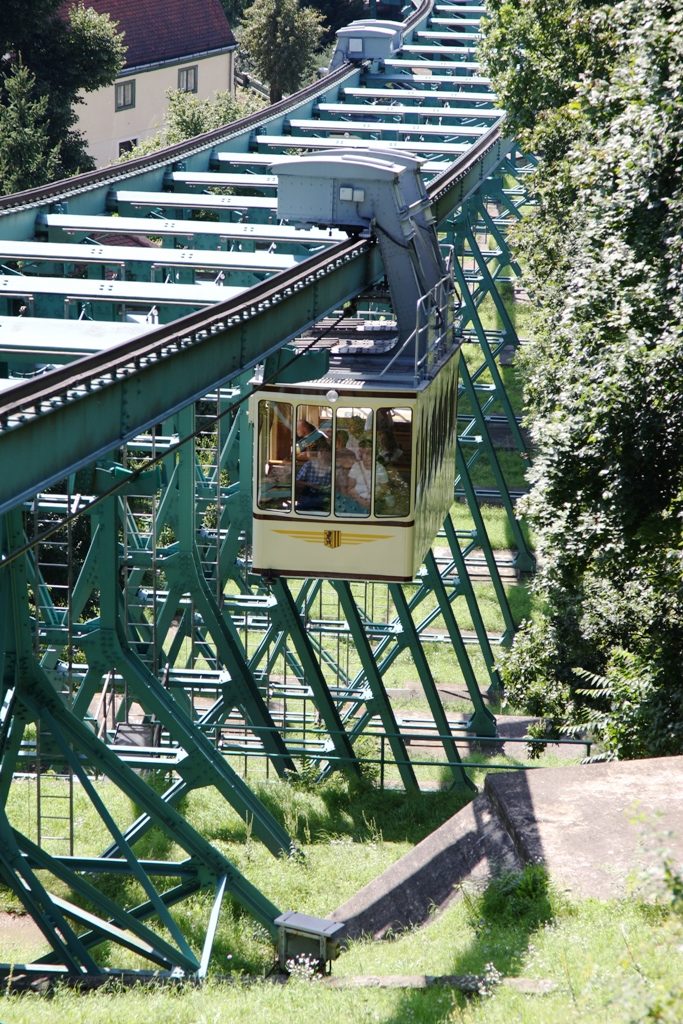
No anniversary celebration possible due to Corona restrictions
Dresden’s historic suspension railway („Schwebebahn“ in German language), which has been transporting local residents and tourists in Loschwitz on the river Elbe for generations, turns 120 this year. The first ride of the technical monument took place on 6 May 1901. Unfortunately, due to the pandemic, the anniversary cannot be adequately celebrated. Nevertheless, an individual visit and a ride on the train are still possible even under Corona restrictions. It runs daily from 9:30 am to 8 pm. If the weather is fine, coffee will be available to take away at the top station. As soon as gastronomy is permitted again, seating will also be set up on the platform. Then guests can enjoy the view from the elevated terrace even better. In addition, the tranquil district of Oberloschwitz is perfect for a Sunday outing or a walk.
“I called it suspension railway”
At the end of the 19th century, Eugen Langen, an engineer and sugar manufacturer from Cologne, was concerned with the development of a variant suitable for passenger transport, the industrial suspension railways used in his factory. In a letter of 1892 to Wilhelm von Siemens, who was interested in the idea, Langen wrote, “I called the thing a suspension railway”. Based on the principle of suspended carriages, the suspension railways in Wuppertal and Dresden were built at the turn of the century, although the railway in Wuppertal serves a longer route, runs on the plain and was put into service a good two months earlier. The railway in Dresden, on the other hand, runs on the mountainside and is moved by a cable. Today it is considered the oldest mountain railway in the world.
Construction as an investment
The Dresden suspension railway owes its existence ultimately to the technical ambition of the Dresden engineer Bellingrath, who was acquainted with Eugen Langen. The court bookseller Warnatz, on the other hand, had more of a monetary interest and contributed significantly to the financing. The funicular railway, which had already opened in 1895, caused the price of land at the Weißen Hirsch to skyrocket. Warnatz therefore wanted to earn money by speculating on land in Oberloschwitz. So the 274-metre-long funicular was built on the slopes of the Elbe, overcoming a height difference of 84 metres and thus making the arduous climb to Oberloschwitz superfluous. The two carriages are still suspended today from two rails held by a total of 33 steel supports. The railway was initially powered by a steam engine, but since 1909 an electric motor has provided the necessary power. The 390-metre-long and 38-millimetre-thick steel cable moves the carriages.
The curve saved the suspension railway from being taken away
There were numerous obstacles during the construction of the suspension railway. Among other things, the plot of land intended for the lower station at Pillnitzer Landstraße number 3 could not be acquired, so that the originally straight route of the cableway had a bend to the left as seen downhill. Legend has it that this slightly curved route saved the suspension railway from being transported to the Soviet Union as a reparation after 1945. The Soviet Union allegedly preferred a straight track.
Next general inspection not before 2023
As a historical monument, the suspension railway requires extensive and regular maintenance. In addition to the two legally required inspections in spring and autumn, maintenance work is necessary at longer intervals. A major overhaul, during which the carriages and supports were also overhauled, took place from 1984 to 1991. The last major maintenance took place in 2017 when, among other things, the cable was replaced and a new control system was installed. The next general inspection is not necessary until 2023. Until then, the „Schwebebahn“ should run without any major break.

Some technical data:
- Operation mode: driverless shuttle
- Stations: Loschwitz, Oberloschwitz
- Length: 273.8 m
- Difference in height: 84.2 m
- Avg. gradient: 32.18 %
- Max. gradient: 39.90 %
- .
- Motor power: 80 kW
- .
- Total capacity: 400 passengers per hour in each direction
- Vmax: 1,6 m/sec
- Travel time: 4.5 min
(information provided by: DVB AG)
09.05.2021
